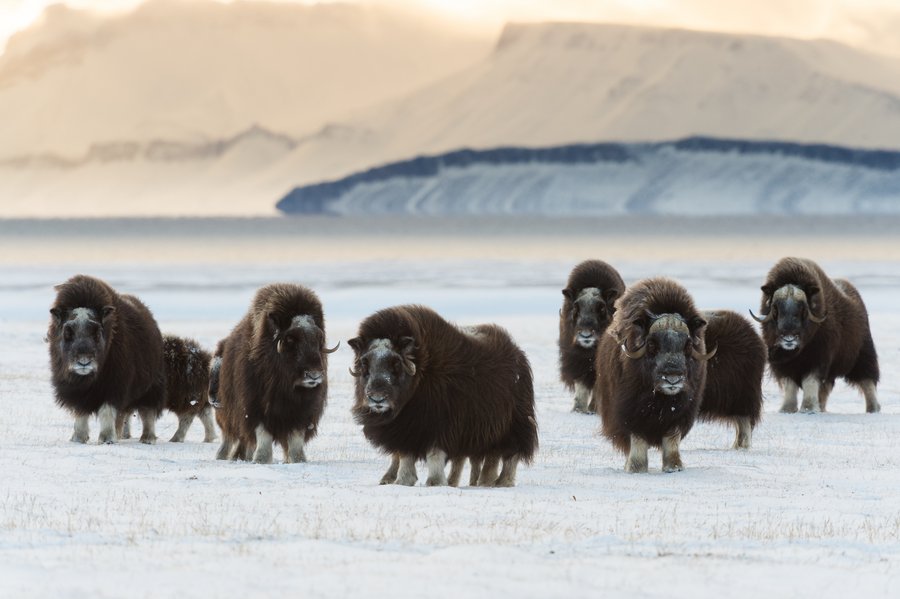A new database reveals previously unsuspected patterns of Arctic animal movement
The Arctic Animal Movement Archive, unveiled Friday compiles and standardizes animal-movement data — and makes it freely available to other scientists.

Scientists have long known that global warming is changing the Arctic’s climate, and with it, the living conditions for the animals there. Individual studies have also suggested how this may be happening and what the outcomes might be.
Studies that can help understand what is happening on a larger scale — involving multiple species or over wider areas, for example — are less common. Factors such as political boundaries and institutional rivalry may mean data are never shared. In cases where they are, different collection methods may make them incompatible. Finally, the sheer cost and magnitude of such endeavors — tracking collars, for example, may cost hundreds or even thousands of dollars, and scientists must find the animals they wish to outfit them with — often preclude collecting the data that would help put individual studies into perspective.
Now, it appears that scientists looking to assemble a bigger picture have been given a helping hand in the form of a massive database dedicated to the migration and movements of animals in the Arctic and sub-Arctic. The Arctic Animal Movement Archive, unveiled in a paper published Friday by Science, has compiled and — crucially — standardized animal-movement data and made that data freely available to other scientists.
[Svalbard reindeer are shrinking as their Arctic environment changes]
The information contained in the 200 or studies involving 96 species gives scientists an indication of how animal movements have changed, which helps them see where new studies fit in the larger perspective, according to the Max Planck Institute, a German research outfit that is hosting the archive,
“This can be used to improve wildlife management, address critical research questions and document changes in the Arctic for future generations,” Sara Davidson, a data curator with the Max Planck Institute, said.
Three examples of research completed using the database and detailed in the Science paper, indicate, according to the authors, that animals in the Arctic are shifting their behaviour in ways that could affect their ability to eat, mate and survive.
[Invasive species are still rare in the Arctic — but that could soon change]
One of the studies, for example, compared calving dates of more than 900 female caribou. The information, recorded between 2000 and 2017, show that while southern caribou have not changed when they give birth, northern caribou are giving birth earlier in the spring, roughly in line with the earlier arrival of spring in the North.
Other studies, looking into things like seasonal migration and how well animals are able to adjust their mobility to altered climatic conditions, suggest that species are responding differently and this could have an influence on things like survival, competition and hunter-prey dynamics.
“The ability to look at biological processes, like birth, at such a large scale, across populations and subspecies and over millions of square kilometers, is unprecedented for a species in such a remote and harsh environment,” said Elie Gurarie, a biologist with the University of Maryland and a co-author of the paper.
[Renewed EU funding will keep a Scandinavian Arctic fox program going]
Identifying that animals are changing their behavior is one thing, but it is also important to study what this means, according to Gurarie.
“These results reveal patterns that we would not have suspected, and point to further lines of inquiry about everything from caribou evolution to their ability to adapt to environmental changes moving forward,” he said.
In the case of early calving by northern reindeer, this might involve looking into how earlier births influences survival rates. Because earlier spring is often associated with periods of wintry conditions, earlier births may mean fewer calves survive; on the other hand, an earlier birth could prove beneficial by giving calves more time to grow during summer.